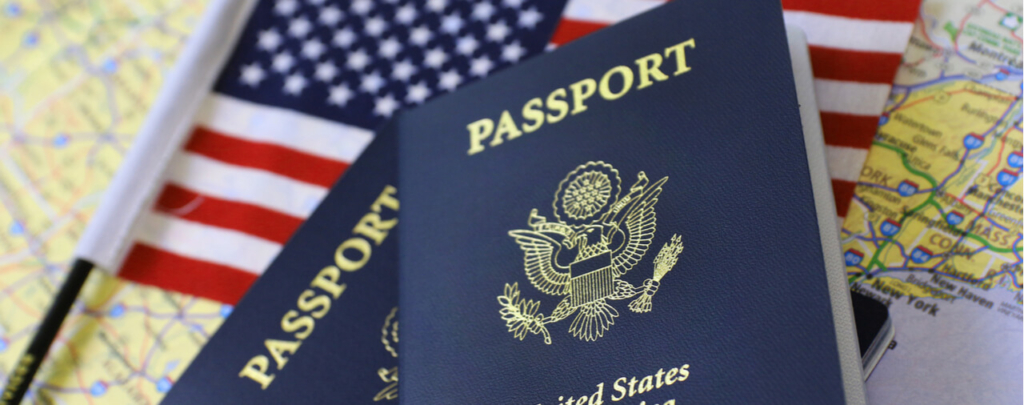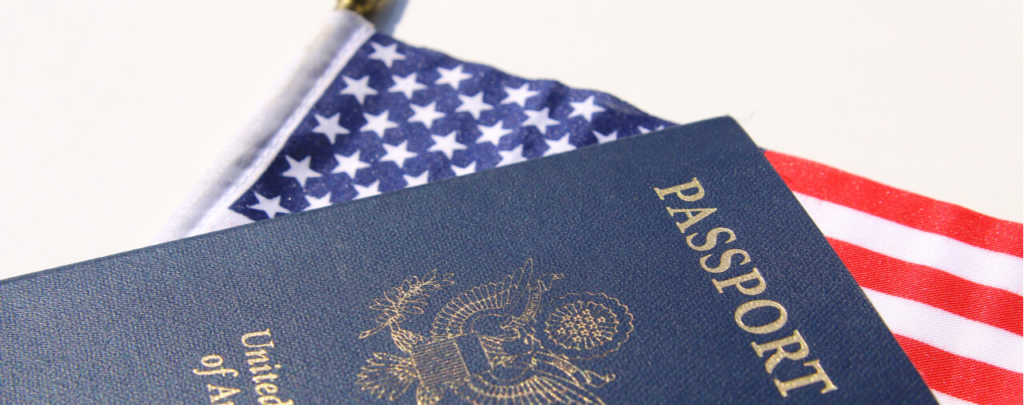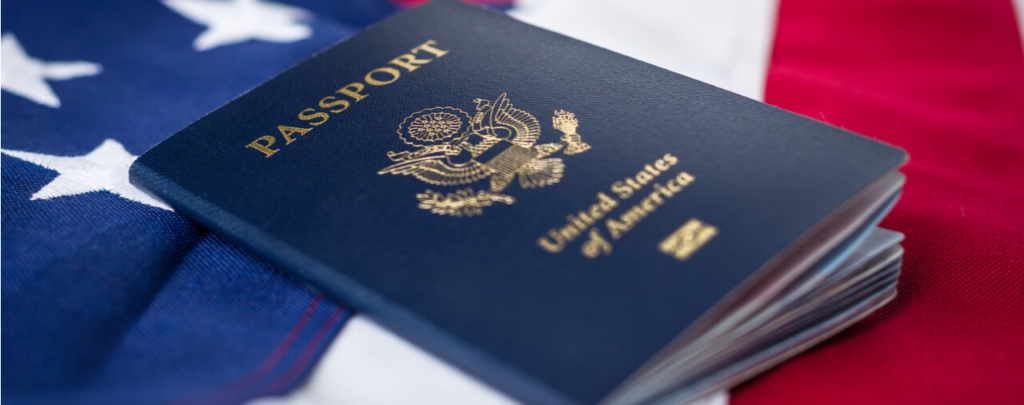- Introduction
- General Eligibility Requirements
- Overview of Form N-400 Filing and Process
- Form N-400 Part 1. Information About Your Eligibility
- Form N-400 Part 2. Information About You
- Form N-400 Part 3. Accommodations for Individuals With Disabilities and/or Impairments
- Form N-400 Part 4. Information to Contact You
- Form N-400 Part 5. Information About Your Residence
- Form N-400 Part 6. Information About Your Parents
- Form N-400 Part 7. Biographic Information
- Form N-400 Part 8. Information About Your Employment and Schools You Attended
- Form N-400 Part 9. Time Outside the United States
- Form N-400 Part 10. Information About Your Martial History
- Form N-400 Part 11. Information About Your Children
- Form N-400 Part 12. Additional Information About You
- Form N-400 Part 13. Applicant’s Statement, Certification, and Signature
- Form N-400 Part 14. Interpreter’s Contact Information, Certification and Signature
- Form N-400 Part 15. Contact Information, Declaration, and Signature of the Person Preparing This Application, if Other Than the Applicant
- Form N-400 Parts 16-18
- Requisite Evidence for Initial Filing of Form N-400
- Conclusion
Introduction
Beginning on December 23, 2016, applicants for naturalization have been required to use the 12/23/16 edition of the Form N-400, Application for Naturalization for new applications. In this article, we will provide a general walk through of the current version of the Form N-400, which saw significant changes from previous editions of the Form. Please note that this overview is not intended to be a “do it yourself” guide. Those seeking naturalization are well advised to consult with an experienced immigration attorney for a case-specific evaluation for eligibility for naturalization. Most applicants are also well advised to work with an experienced attorney through each step of the process, including completing the Form N-400.
For your reference, please see the PDF of the Form N-400 [PDF version] and the associated Form N-400 instructions [PDF version]. We will rely on both of these documents for the articles. We have uploaded them for informational purposes only. When retrieving a United States Citizenship and Immigration Services (USCIS) form, individuals should always go to the USCIS website to ensure that they have the most up-to-date version of the form and the form instructions.
General Eligibility Requirements
The Form N-400 instructions list general eligibility requirements for naturalization. Individuals should consult with an attorney for an assessment of whether they are likely to qualify for naturalization before filing the Form N-400. The instructions list the general eligibility requirements, specifying that an applicant must (paraphrased):
1. Be at least 18 years of age at the time of filing (except active duty members of the U.S. armed forces);
2. Have been a lawful permanent resident for a requisite period of time;
3. Have lived in the state or USCIS district where applicant claims residence for at least 3 months prior to filing;
4. Meet the continuous physical presence requirement [see article];
5. Meet the continuous residence requirement [see article];
6. Demonstrate good moral character [see article on conditional bars];
7. Demonstrate an attachment to the principles and ideals of the U.S. Constitution;
8. Demonstrate a basic knowledge of U.S. civics and an ability to read, write, speak, and understand basic English; and
9. Take an Oath of Allegiance to the United States (some applicants may be eligible for a modified oath).
Overview of Form N-400 Filing and Process
Each Form N-400 applicant must be properly and fully completed, signed, and filed. Signatures must be handwritten. The Form N-400 must be submitted with the requisite fee. No fee is required for those filing under the military provisions under sections 328 or 329 of the Immigration and Nationality Act (INA). Please see our articles on fee waivers [see article] and reduced fees [see article] to learn about these issues. Detailed payment submission instructions are found on the form instructions.
The USCIS may require applicants to appear for an interview or provide fingerprints, a photograph, and/or a signature. The USCIS will schedule a biometric services appointment after it has received a Form N-400 and determined that it is complete. The applicant must sign an oath reaffirming that he or she provided or authorized all information in the application, that he or she reviewed and understood the information, and that all of the information was complete, true, and correct at the time of filing.
In complying with the Form N-400 request for documentation, applicants may submit legible photocopies of documents unless the Instructions specifically state that an original document must be provided. The USCIS may request an initial document on its own initiative.
Whether typed or hand-written, the Form N-400 must be filled out in black ink.. All questions must be answered fully and correctly. The applicant may answer a question with “N/A” if the question does not apply in his or her case.
Applicants may file for naturalization under sections 316(a) or 319(a) of the Immigration and Nationality Act (INA) within 90 days of meeting the continuous residence requirement. However, the applicant must meet all other requirements for naturalization at the time of filing.
It is important to remember that the Form N-400 is filled out under penalty of perjury. An applicant who knowingly provides false information may be subject to serious criminal or immigration penalties. Applicants must always be fully forthright regardless of whether the information would possibly hurt the chances of approval of the application.
Form N-400 Part 1. Information About Your Eligibility
First, the applicant must be at least 18 years of age (except active duty members of the U.S. armed forces) in order to apply for naturalization using the Form N-400. Part 1 of the Form N-400 then includes one question requiring the filer to select the basis on which he or she is eligible for naturalization.
The first two choices are the most common. The first choice is for individuals who are seeking naturalization after having been in the United States in lawful permanent resident status for the previous five years. The second choice is for those with three years of lawful permanent resident status who have been married to and living with a U.S. citizen spouse for that three-year period, provided that the U.S. citizen spouse had citizenship for at least three years prior to the naturalization application.
The third choice is for lawful permanent residents who are married to a U.S. citizen spouse who is regularly engaged in specified employment abroad under section 319(b) of the Immigration and Nationality Act (INA). The applicant must have been authorized to accompany and reside with his or her spouse abroad in order to qualify under section 319(b). Please see the following section of our website to learn about section 319(b) [see section]. Applicants filing under section 319(b) who reside abroad should select the USCIS Field Office at which they would like to have their interview.
The fourth choice is for naturalization applicants filing on the basis of qualifying military service.
The fifth choice is for rare cases that fall outside of the four main categories. An applicant choosing choice five must specify the basis on which he or she is eligible for naturalization. One example would be a noncitizen national filing for naturalization under section 325 of the INA [see section].
Applicants are required to choose one and only one of the five grounds in part 1. Choosing more than one may result in the application being delayed. An experienced immigration attorney will be able to assist in determining which ground is applicable given the facts of the case. This is especially important in special cases not covered by the four main categories.
Form N-400 Part 2. Information About You
Part 2 requires the applicant to provide information about his or herself. This includes the applicant’s current name, the applicant’s name as it appears on his or her Permanent Resident Card (even if it has an error), and any other names (including nicknames, aliases, and maiden name) used since birth, if applicable. Please note that the applicant’s “current name” is his or her legal name.
The fourth choice in part 2 allows the applicant to apply to legally change his or her name. The form instructions explain, however, that any name change requested will not be final until the applicant is naturalized by a state court. Applicants whose names have been previously changed through marriage, divorce, or by other court order do not need to request name changes on the Form N-400. The form instructions also explain that the USCIS cannot process name change requests for members of the military or spouses of such members who are naturalizing overseas.
Questions 5-9 ask for the applicant’s U.S. Social Security Number and USCIS Online Account Number (if applicable), gender, date of birth, and date of admission for lawful permanent residence. The Form N-400 will be rejected if it does not include the date of birth.
Question 10 asks for the applicant’s country of birth and question 11 asks for the applicant’s country of citizenship or nationality. It is important to distinguish these questions since many applicants may not be citizens or nationals of the country where they were born. Furthermore, the applicant must use the name of his or her country of birth that applied at the time he or she was born, even if the name subsequently changed. Although relevant in many cases around the world, one common case where this issue arises is for applicants who were born in the Soviet Union.
Question 12 asks the applicant if he or she has a developmental disability or impairment that would prevent him or her from demonstrating an understanding of the English language and/or the civics requirements for naturalization. The answer should be “yes” if the developmental disability or impairment would impair either or both. If the applicant answers affirmatively, he or she must submit a completed Form N-648, Medical Certification for Disability Exceptions, along with the Form N-400. Like all USCIS forms, this may be found on the USCIS website.
Question 13 concerns other exceptions from the English Language Test. The choices are straightforward, having to do solely with the applicant’s age and the length of time he or she was a lawful permanent resident prior to filing the Form N-400.
Form N-400 Part 3. Accommodations for Individuals With Disabilities and/or Impairments
Part 3 asks if the naturalization applicant is requesting special accommodations for disabilities or impairments. If the applicant is requesting such accommodations, he or she must specify (1) the impairment and (2) the requested accommodation. The first two choices are for hearing issues and vision issues, respectively, while the third choice is for other types of disabilities or impairments (e.g., such as require use of a wheelchair). Regarding choice three, the form instructions note that individuals do not need to request an accommodation for physical access to a domestic USCIS office.
The form instructions explain that the USCIS considers accommodation requests on a case-by-case basis. Requesting and/or receiving an accommodation does not affect eligibility for benefits.
Form N-400 Part 4. Information to Contact You
Part 4 of the Form N-400 is a simple request for telephone and email contact information. It is important that the applicant provide accurate and up-to-date contact information and then alert the USCIS if there are changes during the pendency of the application.
Hearing-impaired applicants who include a TTY telephone number should write “TTY” after the number.
Form N-400 Part 5. Information About Your Residence
Part 5 of the Form N-400 not only asks for information about the applicant’s current residence, but also about all residences where the applicant lived in the previous five years. This section also asks for the applicant’s current mailing address if it is different from his or her current physical address (otherwise, it will be presumed to be the same as the current physical address). Although the Form N-400 only provides room for four physical addresses, applicants with more than four residences in the previous five years must note them on additional sheets of paper. Residences outside of the five-year period need not be included.
Applicants applying for naturalization under section 319(b) must provide a U.S. address if they want the USCIS to collect biometrics in the United States.
The form instructions include special considerations for victims of domestic violence. An applicant who is a victim of domestic violence is not required to disclose the confidential address of a shelter or safe house. If the applicant feels unsafe providing the address of a shelter or safe house, the applicant may instead provide a “safe address” where he or she can receive mail. However, the form instructions ask that the applicant not provide a Post Office Box number unless it was his or her former mailing address. Applicants who previously resided in a shelter or safe house within the previous five years, may provide just the name of the shelter or safe house, along with the city and state. . USCIS may ask for further clarification at the interview if it deems it necessary.
Please note that after filing the Form N-400, the applicant must notify the USCIS of any change of address within 10 days of moving.
Form N-400 Part 6. Information About Your Parents
The applicant need only fill out part 6 if one of his or her parents is a U.S. citizen. If neither of the applicant’s parents is a U.S. citizen, he or she may skip part 6 entirely. Allowing applicants to skip this part if it does not apply was one of the significant changes in the current edition of the Form N-400 [PDF version].
If the applicant’s mother or father is a U.S. citizen, he or she must fill out the fields for that parent (or both in the case that both are citizens). These include the name of the parent, the parent’s country of birth, the parent’s date of birth, and the date on which the parent became a U.S. citizen.
Form N-400 Part 7. Biographic Information
Part 7 asks for certain biographic information about the applicant. This information is used for background investigations.
The first question asks simply if the applicant is Hispanic or Latino. The applicant should answer yes if he or she is of Cuban, Mexican, Puerto Rican, South or Central American, or other Spanish culture of origin. This is separate from the applicant’s race.
The second question asks the applicant to check all boxes for ethnicity or race that may apply from six choices. This means that the applicant may indicate more than one choice. Page 7 of the form instructions include detailed definitions of each choice.
The third and fourth questions ask for the applicant’s height and weight, respectively. The height must be entered in feet and inches. If the applicant does not enter his or her height or does not do so in feet and inches, the processing of the Form N-400 may be delayed. The applicant must enter his or her weight in pounds. If the applicant does not know his or her weight or weighs less than 30 or over 699 pounds, he or she may enter 000 in this field.
Questions 5 and 6 ask the applicant to select from a series of choices that best describe his or her eye and hair color, respectively.
Form N-400 Part 8. Information About Your Employment and Schools You Attended
Question 8 asks for information about the places the applicant worked or attended school, full time or part time, in the five years preceding the filing of the Form N-400. Applicants must include all information for the five-year time period, including all military, police, and/or intelligence service during that period. If the applicant is or was, for any portion or portions of that five-year period, self-employed or unemployed, he or she should print “self-employed” or “unemployed.” Applicants should use additional sheets paper if necessary.
Form N-400 Part 9. Time Outside the United States
For part 9, the applicant must indicate all time spent outside of the United States during the previous five years. He or she must indicate the total number of days (24 hours or longer) spent abroad and the number of trips of 24 hours or longer taken outside the United States. The applicant must also list all trips 24 hours or longer taken outside of the United States in the previous 5 years, listing the date of departure and the date of return, and specifying if the trip lasted six months or more.
This information is critical to satisfying the continuous residence and physical presence requirements for naturalization. To learn more please see our overview of the issue with links to relevant related article
Form N-400 Part 10. Information About Your Martial History
Part 10 asks the applicant questions about his or her marital history. If the applicant is single and never married, he or she should indicate that in question 1 in the section and then move on to part 11.
If the applicant is or was married, he or she must proceed to fill out part 10 beyond the first question. Part 10 asks about the applicant’s current marital status, the number of time the applicant has been married, and information about the applicant’s current spouse and any previous spouse(s). The applicant must include information, if applicable, about previous marriages regardless of how they ended (including annulled marriages). If the applicant was married to the same person more than once, each marriage counts as a separate marriage.
The applicant will be asked to indicate if his or her current spouse, if applicable, is a military service member and/or a U.S. citizen. The form will ask the applicant to specify if his or her spouse was a citizen from birth or if he or she obtained citizenship after birth (and the time of such acquisition, if applicable).
Regarding information about previous marriages, the applicant must use additional sheets of paper if necessary.
Form N-400 Part 11. Information About Your Children
Part 11 requires applicants to submit information about all of their children. Information must be included regardless of whether the child(ren) are alive or deceased, their ages, where they live or who they live with, and whether the applicant had the children in or outside of marriage. Current stepchildren and legally adopted children must be included.
If the son or daughter of the applicant is residing with the applicant, the applicant must enter “Child Residing With Me” in the space provided for the son’s or daughter’s address. Otherwise, the applicant must print the son’s or daughter’s address. If the son or daughter is missing or deceased, the applicant must indicate this in the space provided for the address.
The applicant must use additional sheets of paper if necessary.
Form N-400 Part 12. Additional Information About You
Part 12 includes 50 questions for the applicant to answer about him or herself. The vast majority of questions are in a yes/no format.
If the applicant answers “yes” to any question numbered 1-21, he or she must include a typed or printed explanation on additional sheets of paper. The questions touch on a variety of subjects, including, whether the applicant has ever claimed to be a U.S. citizen, taxation in the United States, and potential illegal activities abroad.
Questions 22-28 deal with the applicant’s criminal history. The applicant is required to answer “yes” even if his or her criminal records have been sealed, expunged, or otherwise cleared. The Form N-400 makes explicit that the applicant must disclose the information even if someone (e.g., a judge, law enforcement officer, or attorney) told the applicant that it no longer constitutes a record or that the applicant need not disclose it. Question 29 includes a chart for the applicant to add more information about any “yes” answers from 22-28. Question 29 may be skipped if the applicant was able to answer no to questions 22-28. If necessary, the applicant may use extra sheets of paper to answer question 29 and submit evidence to support the answers.
Questions 30-46 deal mostly with questions relating to the applicant’s immigration history. If the applicant answers “yes” to any of these questions, except for 37 and 38 (dealing with service in the armed forces), he or she must include a typed or printed explanation on additional sheets of paper, along with evidence, to support the answers.
For questions 45-50, if the applicant answers no, he or she must include a typed or printed explanation on additional sheets of paper. The applicant should also provide evidence to support his or her answer.
The form instructions note that answering “yes” or “no” will not automatically cause an application to be denied. As always, it is imperative that applicants be fully forthright regarding their answers even if the information may weigh against the approval of their applications.
Form N-400 Part 13. Applicant’s Statement, Certification, and Signature
Here, the applicant must state, in response to question 1, whether he or she reads and understands English, and read and understood every question in the form, or whether he or she relied on an interpreter (and, if so, the language employed by the interpreter when reading the Form N-400 to the applicant).
For question 2, the applicant must certify the name of the preparer of the form, if applicable, and that the preparer only included information on the Form N-400 that the applicant provided or authorized.
Next, the applicant must certify, under penalty of perjury, that he or she:
1. Reviewed, provided, or authorized all information in the application;
2. Understood all of the information contained in and submitted with the application; and
3. Knows all of the information to be complete, true, and correct at the time of filing.
The signature provided must be that of the applicant (or parent or legal guardian, if applicable). Stamped or typewritten names are not acceptable. However, the applicant may place an “X” mark in lieu of a signature if he or she is unable to write in any language.
Form N-400 Part 14. Interpreter’s Contact Information, Certification and Signature
This field is to be filled out by the interpreter if the applicant used an interpreter. This field must be signed and dated, if applicable, by the interpreter.
Form N-400 Part 15. Contact Information, Declaration, and Signature of the Person Preparing This Application, if Other Than the Applicant
This field is to be filled out by the preparer of the Form N-400 if it is a person other than the applicant (e.g., such as an immigration attorney). This field must be signed and dated, by the preparer, if applicable.
The attorney or representative will also have to separately submit a Form G-28, Notice of Entry as Attorney or Representative.
Form N-400 Parts 16-18
These three parts are filled out at the interview in accordance with instructions from a USCIS officer.
Requisite Evidence for Initial Filing of Form N-400
The Form N-400 instructions list the documents that applicants must submit along with the Form N-400 (beginning on page 10 of the form instructions).
Applicants who reside overseas must submit two identical color photographs of the applicant taken recently. Detailed instructions about the photographs are found in the form





